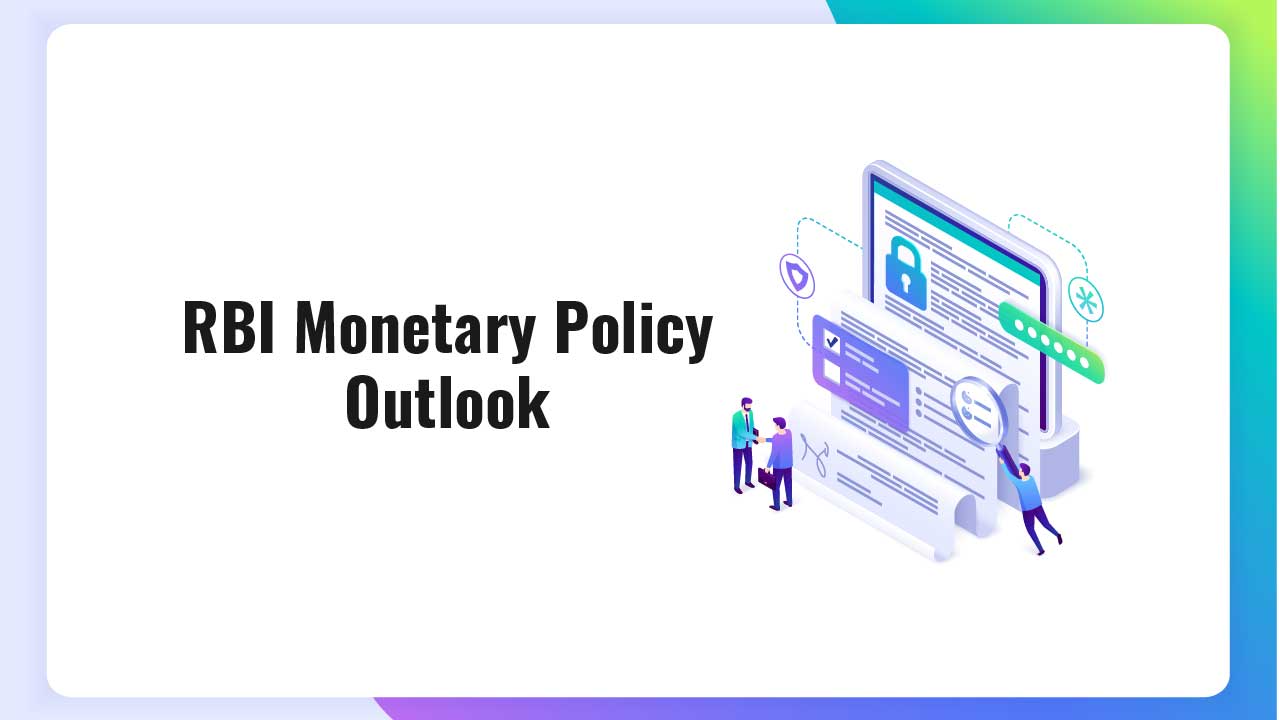RBI Monetary Policy Highlights and Outlook

Last Updated: 8th August 2022 - 07:03 pm
On 8th April, the Reserve Bank of India (RBI) announced the Monetary Policy. The six-member Monetary Policy Committee (MPC) voted unanimously to keep the repo rate unchanged at 4 percent. MPC committee keeps the reverse repo rate unchanged at 3.35 percent as Russia’s invasion of Ukraine added to a rise in inflation. The Reserve Bank of India’s Monetary Policy Committee headed by Reserve Bank of India (RBI) Governor Shaktikanta Das kept the repo rate unchanged for the 11th consecutive time. The repo rate or the short-term lending rate was the last cut on May 22, 2020. Since then, the rate remains at a historic low of 4 percent.
Composition of the Monetary Policy Committee:
- Governor of the Reserve Bank of India – Chairperson, ex officio: Shri Shaktikanta Das.
- Deputy Governor of the Reserve Bank of India, in charge of Monetary Policy– Member, ex officio: Dr. Michael Debabrata Patra.
- One officer of the Reserve Bank of India to be nominated by the Central Board – Member, ex officio: Dr. Mridul K. Saggar.
- A professor at the Mumbai-based Indira Gandhi Institute of Developmental Research: Prof. Ashima Goyal.
- A professor of finance at the Indian Institute of Management in Ahmedabad: Prof. Jayanth R Varma.
- An agricultural economist and a senior adviser with the National Council of Applied Economic Research in New Delhi: Dr. Shashanka Bhide.
Start Investing in 5 mins*
Get Benefits worth Rs. 5100 | Rs. 20 Flat Per Order | 0% Brokerage
Key Points:
- The GDP growth forecast has been lowered to 7.2 percent, owing to inflationary pressures due to the ongoing Russia Ukraine War. Earlier, the central bank had kept the GDP growth rate at 7.8 percent.
- RBI announced that now people can withdraw money from ATMs without a card in all banks across the nation. This has been done to give a push to Digital India.
- Net worth requirement for Bharat Bill Payments System Operating Units lowered from Rs 100 crore to Rs 25 crore.
- Rationalization of risk weights for individual housing loans to be extended till March 31, 2023.
- RBI sees the Current account deficit at sustainable levels and forex reserves at $606.5 billion.
- Inflation is now projected at 5.7% in 2022-23 with Q1 at 6.3%, Q2 at 5%, Q3 at 5.4%, and Q4 at 5.1%.
- India’s 10-year bond yield rises to 7%, the highest since 2019.
The Marginal Standing Facility (MSF) rate and bank rates remain unchanged:
- Policy Repo Rate is the interest rate at which banks can borrow money from the RBI against the collateral. The repo rate is kept at 4.00%.
- The Reverse Repo Rate is the interest rate at which the RBI can absorb liquidity from banks against the collateral. The reverse repo rate is kept at 3.35%
- Marginal Standing Facility Rate is a provision that enables the scheduled commercial banks to borrow an additional amount of money from the RBI. Currently, the MSF rate is 4.25%
- Bank Rate is the interest rate at which RBI lends money to domestic banks. At present, the Bank rate is 4.25%
- CRR is the percentage of a bank's total deposits that it needs to maintain as liquid cash. The cash reserve ratio is 4%
- SLR is the minimum reserve requirement that needs to be maintained by commercial banks in the nation. SLR is 18.00%
Monetary Policy Outlook:
- The aggressive cut in GDP estimates for FY23 and a sharp increase in FY23 inflation projections could mean some tightening measures in the future. The current geopolitical events, supply chain issues, and commodity price inflation are restricting RBI and forcing it to gradually turn hawkish although it would like to continue with its pro-growth outlook.
- The aim of the central banks worldwide is to control inflation, unwind easy liquidity and focus on slow and steady growth.
- With no hikes in the repo rate, home loan rates will continue to be flat. Additionally, RBI’s move to extend the rationalization of housing loan risk weight and link them only to loan to value (LTV) ratios for home loans sanctioned up to March 31, 2023, may help keep lending costs cool.
- Flat ₹20 Brokerage
- Next-gen Trading
- Advance Charting
- Actionable Ideas
Trending on 5paisa
Indian Stock Market Related Articles
Disclaimer: Investment in securities market are subject to market risks, read all the related documents carefully before investing. For detailed disclaimer please Click here.
 5paisa Research Team
5paisa Research Team
 Sachin Gupta
Sachin Gupta




